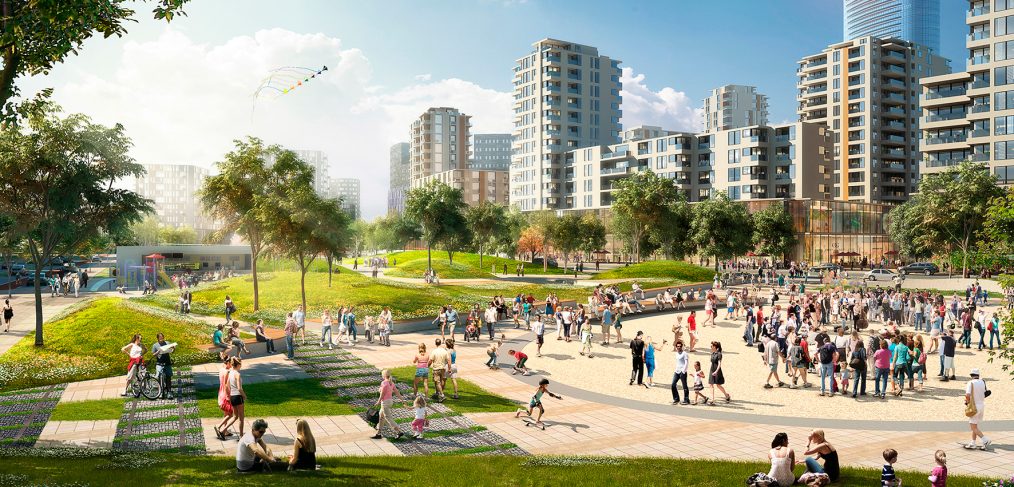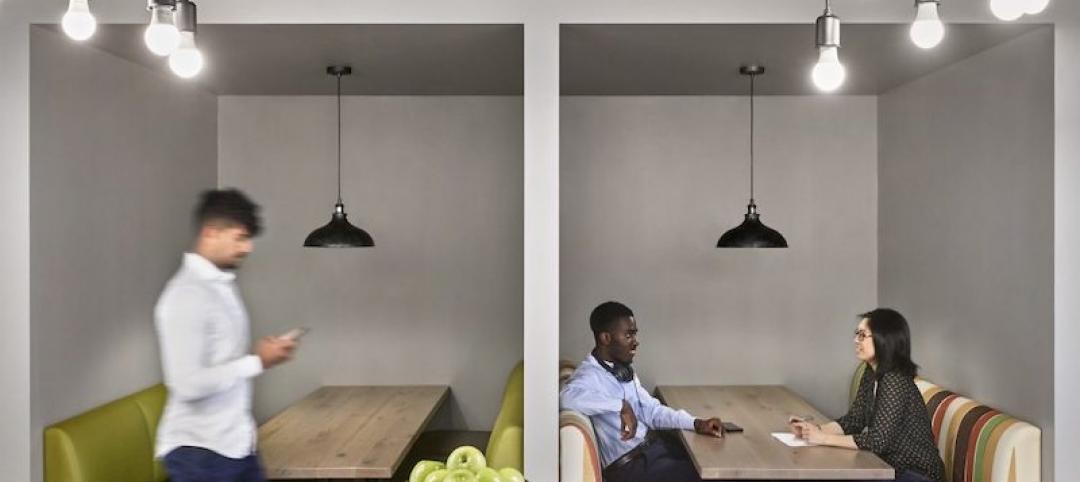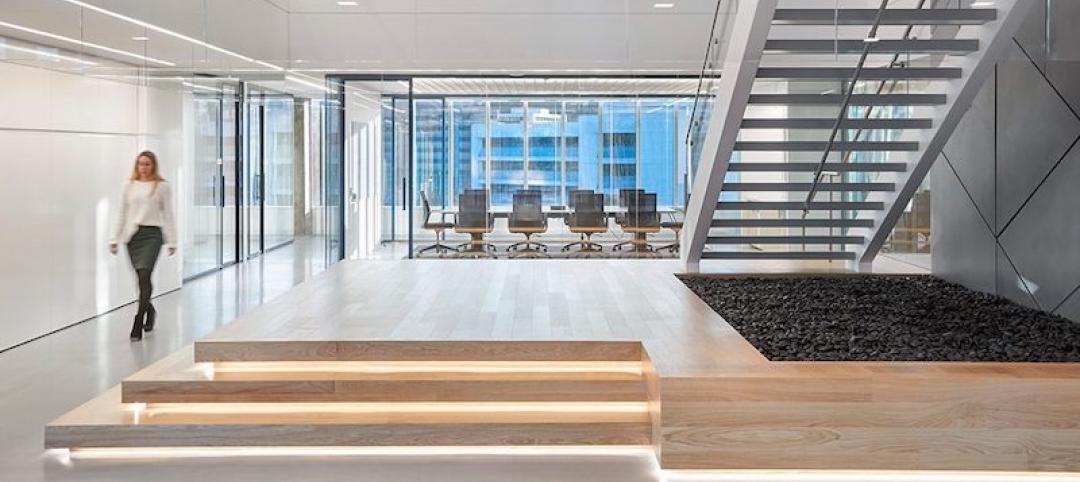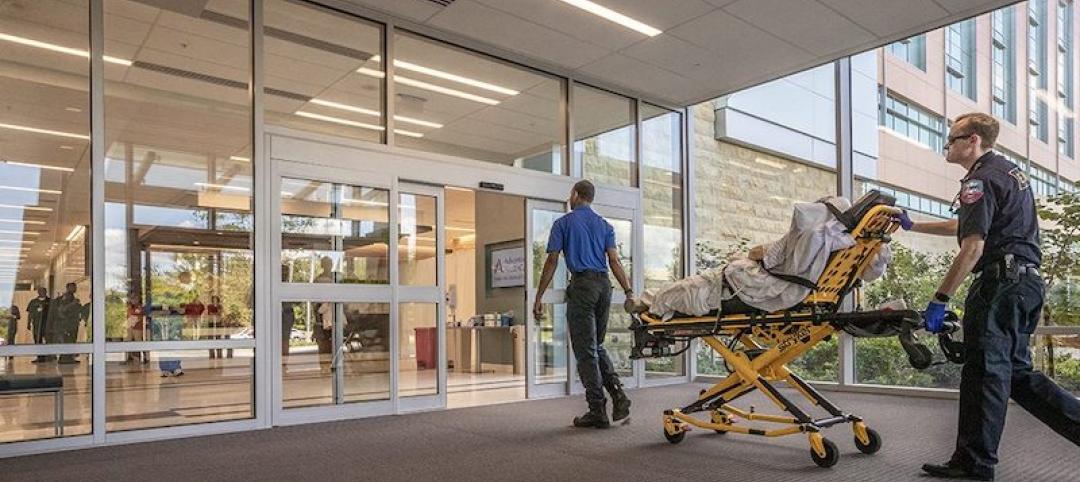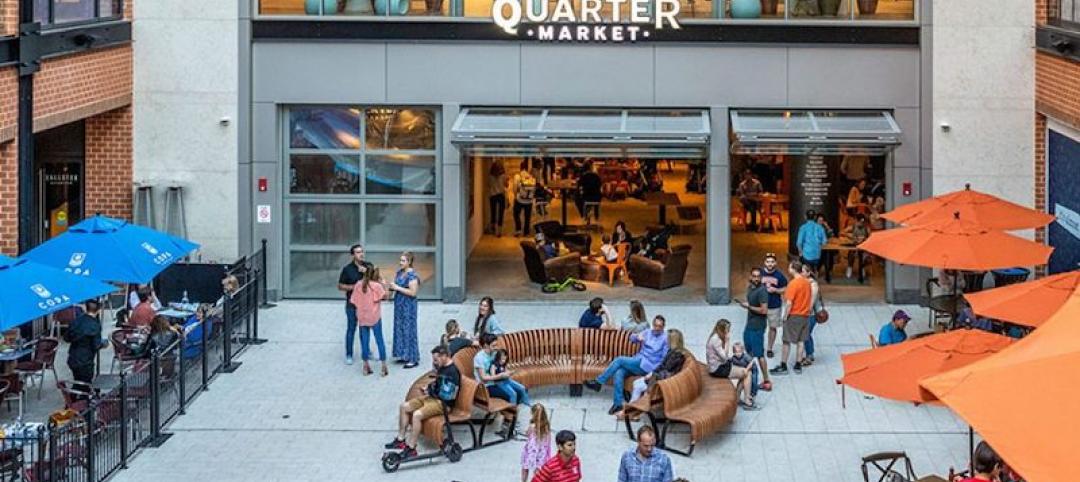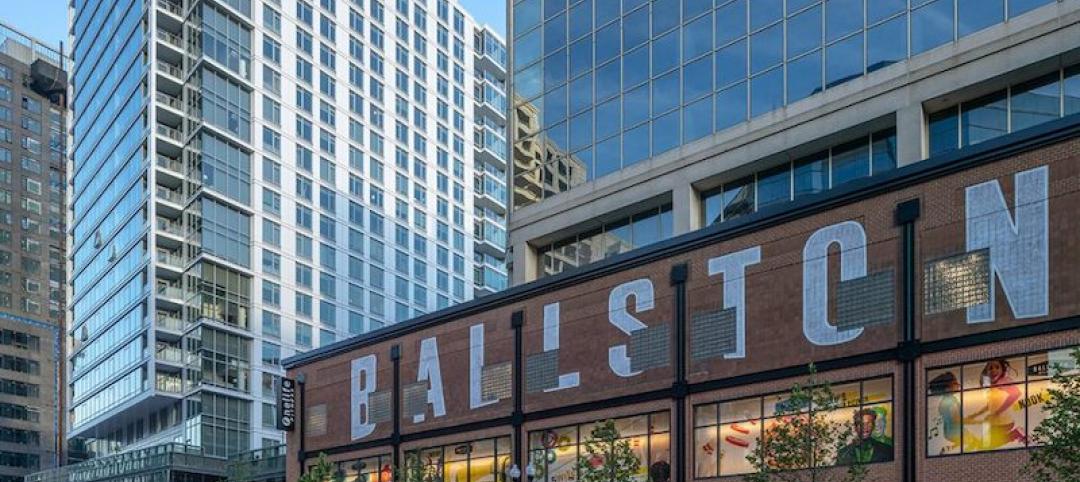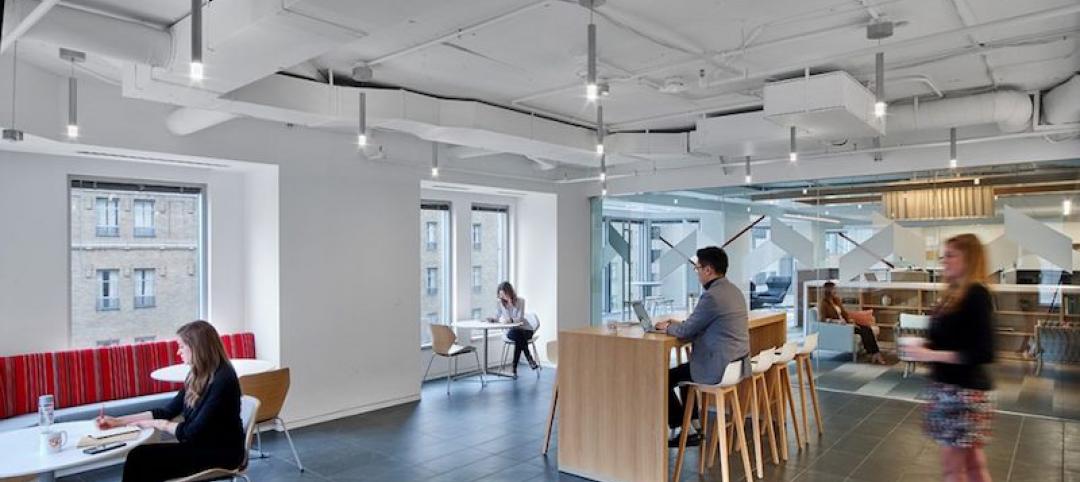Building tall is hot in Europe. Just glance at the headlines of any European news outlet, and you’ll see. Europe is ready to grow…and it’s looking up.
After successful developments in the ‘80s (La Défense, Canary Wharf) and the Mayor’s office in London loosening building-height restrictions in early 2000, slowly but steadily other major European cities are embracing tall buildings. What can we learn from international examples?
Density
Building tall does not immediately mean an increase in density. Actually, the contrary is true; as buildings get taller, they must be set further apart and take up more land. Knowing this, it is not surprising that New York—with more than 250 completed buildings of 150+ meters—is still lower in density then Paris, Athens or Barcelona, according to CityLab. The main reason for this is age. European cities developed at a time when walkability was key and transit was, well, Medieval.
A challenge in the 21st century is to adapt and create the best of both worlds—encouraging walkability and a vibrant street life, while still creating high-quality, dense urban environments.
Benefits of tall buildings
Berlin is exploring the possibilities of the high-rise sphere. Residents are calling for a high-rise plan for the entire city, not the site-by-site approach that the government is currently taking. A healthy balance is needed between users, functions, infrastructure, available green space and accessibility to fully benefit from the impact high(er)-rise development can bring. Unfortunately, these kinds of multi-functional, interconnected developments are scarce in Europe and are part of a vicious cycle: single use high-rise built, little to no benefits to surrounding communities, the public’s perception is negatively influenced and any new developments are opposed.
Based on the global experience of CallisonRTKL, we can draw some key lessons for successful tall building developments in Europe:
- Connectivity and mobility
We must move beyond the single-site approach and instead connect a development to its surrounding buildings, squares, communities and public transportation networks. Accessibility to a variety of transportation options is essential. This includes walking, biking, busses, metro and the car. But providing these options is not enough; a holistic design is imperative. This means integrating infrastructure, engineering, place-making and commercial activities to provide a seamless connection between home and work.
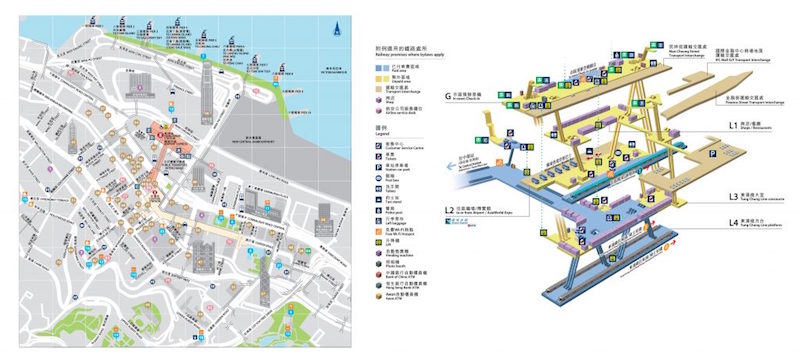 The integration of buildings and transportation options is mastered in Hong Kong. While this example of Hong Kong Station might seem too extreme for Europe, the applied strategies of access, connectivity and affordable public transportation are applicable globally. Source: MTR
The integration of buildings and transportation options is mastered in Hong Kong. While this example of Hong Kong Station might seem too extreme for Europe, the applied strategies of access, connectivity and affordable public transportation are applicable globally. Source: MTR
- Activate the base and human scale
Urban planning on a human scale must take contextual relevance into account. Density achieved on a human scale is further enhanced by cultural offerings, which drive interaction and a spirit of exploration. The spaces where this takes place are even more impactful when green space is woven throughout; serving as excellent connective tissue, it heightens quality of life, provides recreational corridors and generates resources for agriculture and water filtration. The base of a new tall building should be given careful consideration as this is where the public-private/active-passive commercial-office-residential-retail balance is providing the most synergies for successful developments.
- Knowledge and innovation
Playing a role in the global network of connected and smart world cities requires winning the hearts and minds of the talented, entrepreneurial set. They are, more often than not, drawn to cosmopolitan areas. Demonstrating that a city’s cultural and educational offerings are engaged in mutually beneficial partnerships with local industry, and on the forefront of technology and innovation, is not only invaluable marketing, it is essential to a robust and sustainable economy.
- Urban design and planning
Land use patterns, zoning and variations in density guarantee a well-balanced society—society that is safe, diverse, engaging and walkable. The evolution from mono-use to mixed-use development has unfolded as people increasingly desire a more compact lifestyle with the convenience of living, working and shopping in close proximity. Success is hugely dependent on creating a variety of experiences that accommodate live, work and play functions. In practice, this amounts to combining convenient amenities with a hospitable workplace and a vibrant retail, entertainment and cultural district in a manner that maximizes value.
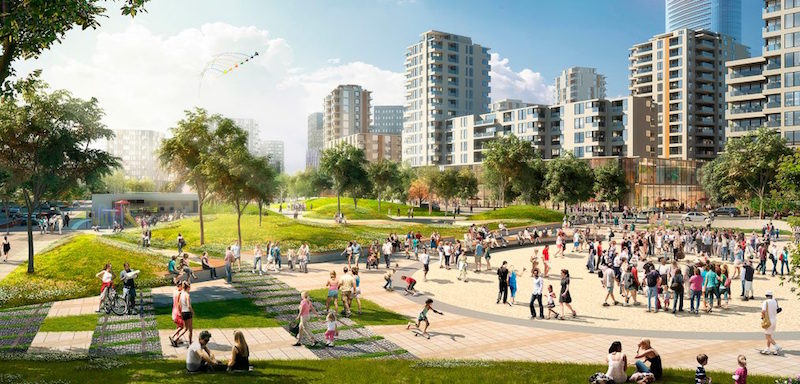 Success is hugely dependent on creating a variety of experiences that accommodate live, work and play functions as proposed in the masterplan for Belgrade Waterfront.
Success is hugely dependent on creating a variety of experiences that accommodate live, work and play functions as proposed in the masterplan for Belgrade Waterfront.
From a legal and zoning perspective, it is essential to be able to effectively transfer land-use rights, break-up superblocks into smaller pieces and allow variations in height while sharing quality public space with the community. This provides opportunities for designers and investors to drive synergies, increase land value, secure sustainable funding and create places of high quality and distinction for all users.
More from Author
CallisonRTKL | Dec 20, 2021
Digital nomads are influencing design
As our spaces continue to adapt to our future needs, we’ll likely see more collaborative, communal zones where people can relax, shop, and work.
CallisonRTKL | Jun 30, 2020
The great reset and our new work life
As many countries begin to return to the office, it’s a chance to ask ourselves: what do we truly value?
CallisonRTKL | May 4, 2020
How working from home is influencing design
The lessons learned in the next few months can help shape how we work and design in the future. For now, remote work is different – and our new normal.
CallisonRTKL | Feb 26, 2020
Sustainability in a material world
The concepts of embodied carbon, zero waste, and deconstruction and reuse often run on parallel tracks.
CallisonRTKL | Jan 30, 2020
The complex dance of healthcare transitioning
Hospital employees, though excited about technological advancements, are expected to navigate a new workplace and care for their patients at the same time, all while training on new equipment and navigating a new building.
CallisonRTKL | Jan 6, 2020
Retail re-invention: Five questions to ask
Why have some malls survived their long-predicted demise, thriving and bumping with new generations of shoppers, while others have been relegated to the ash heap of deadmalls.com?
CallisonRTKL | Aug 6, 2019
Saving the American mall in 5 steps
CallisonRTKL Vice President Marc Fairbrother explains how struggling American malls can turn it all around.
CallisonRTKL | May 29, 2019
Smart buildings can optimize wellness
Employees want wellness initiatives built into their work experience, especially when they’re in spaces that can leave them feeling stiff, stressed, and sick.
CallisonRTKL | Apr 5, 2019
2019 trends in the workplace
From retention and career advancement to the ethics of inclusion and diversity, these five trends will play a major role this year in design, strategic planning and workplace development.
CallisonRTKL | Jan 28, 2019
9 tech trends to track in 2019
Innovations in voice recognition, cognitive neuroscience, and biometrics are among the trending tech topics for 2019, according to CallisonRTKL's Kristin Tilley.

